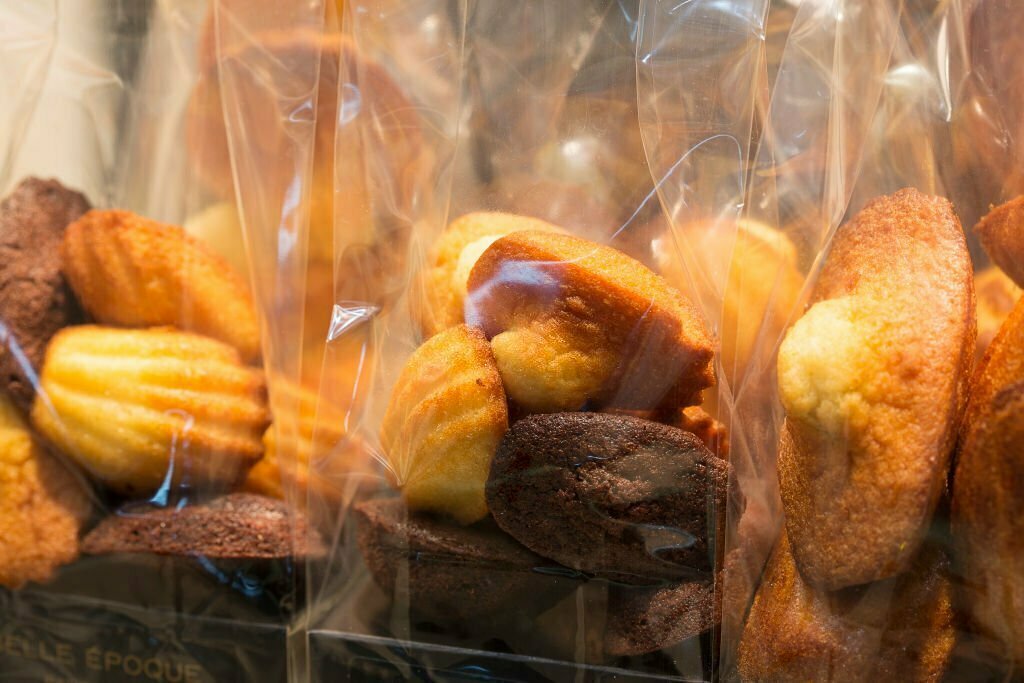

When it comes to food packaging, there are many options to choose from.
Plastic bag manufacturers make a series of plastic bags for food packaging based on size, thickness, material used, and styles.
The best plastic bag suppliers have various plastic bags for food packaging varying from lightweight to thick, durable to transparent, bacteria resistant to heat resistant.
This article will discuss the different types of plastic bags for food packaging.
Polypropylene is an ideal food-safe plastic for production processes that combine excellent chemical resistance and strength.
Compared to LDPE or LLDPE bags, PP bags are more transparent for enhanced product visibility and require high heat.
Its high melting point makes it ideal for heat sealing and microwavable containers.
PP bags are not breathable; meaning, they have a longer product shelf life which is why they are used to store nuts, herbs, candies, garden tools, automotive products, and other confectionaries.
Retailers use PP bags for packaging cream cheese containers, yoghurt, ready-to-eat meals, and VSP containers.
PET is lightweight, has corrosion resistance, and high impact resistance, making it an ideal choice for food packaging.
Since PET won’t degrade upon food contact, they make the perfect food packaging choice for single-use water bottles, bakery trays, soft drinks bottles, snack packs, and more.
PC is a durable, transparent, heat-resistant, and robust thermoplastic used for sterile medical packaging.
It has superior impact resistance and optical clarity, making it ideal for protecting contents from chemicals, scratches, and weathering.
PC finds its application in commercial sterilizable baby bottles and reusable water bottles.
PS is a colourless, hard plastic with little flexibility used in food packaging. Manufacturers turn Polystyrene into foam or cast it into molds to give fine detail in its shape.
PS is widely used to make deli, bakery trays, egg cartons, plastic cups, hot cups, and fast food containers.
CPET is more flexible, resistant to cracking, and can withstand higher temperatures.
These exceptional features make it appropriate for producing plastic food trays used with oven-proof plastic wrap, microwaveable storage containers, conventional ovens, etc.
Restaurants use CPET to serve ready-to-eat meals too.
LDPE is breathable, has a low melting point, and offers excellent clarity, though it is not as strong as HDPE. These properties make it ideal for creating clear plastic packaging bags commonly used to store bulk food items like fresh fruits and vegetables. The material’s flexibility and transparency help maintain product visibility and freshness.
Additionally, because low-density polyethylene has a low melting point, LDPE is often used for heat sealing applications, making it a practical choice for food-safe and tamper-evident packaging.
MDPE is the least used form of the polyethylene family. However, it is used for packaging baked goods, dispensing bottles, wash bottles, and heavy-duty produce bags, thanks to its strength and resistance to tears/chemicals/punctures.
ULDPE is a soft thermoplastic with superior flex crack resistance, tear resistance, and low-temperature flexibility.
ULDPE has high optical clarity making it ideal for packaging coffee, cheese, and meat.
Have you ever seen a sandwich packed in a clear plastic bag displayed on a wooden counter? You saw HDPE.
HDPE is one of the most popular plastics globally, thanks to its variety of superior qualities.
HDPE is extremely lightweight, has high tensile strength, offers water/vapor/temperature resistance, and is relatively transparent.
These excellent qualities make HDPE a popular option for serving and storing food in grocery stores, deli, restaurants, convenience stores, and even home.
Both LLDPE and LDPE plastic bags offer similar features, yet differ in thickness (gauge) with the same strength.
A 1.5 mil thick LDPE bag offers the same strength as a 0.85 mil thick LLDPE bag. This means that LLDPE bags can save money for anyone using it.
LLDPE bags can be used for food storage in refrigerators and freezers in commercial kitchens.
Nylon is strong and resistant to scratch/puncture/flex crack. The material also features a high melting point, does not absorb or dissolve grease/acidic/oil foods, yet can create a decent oxygen barrier.
Polyamide is used in microwave and conventional cooking applications.
Nylon is strong and resistant to scratch/puncture/flex crack. The material also features a high melting point, does not absorb or dissolve grease/acidic/oil foods, yet can create a decent oxygen barrier.
Polyamide is used in microwave and conventional cooking applications.
PVC is another popular plastic type that is made basically from Chlorine.
Polyvinyl Chloride is biologically resistant, chemically resistant, and tamper-resistant, making it ideal for packaging medicines, mints, gums, blister packaging, and shrink wrap for a variety of products.
The plastic types for food packaging mentioned above are recyclable and approved for food contact.
For further information, get in touch with Teong Chuan, a leading plastic company in Malaysia and a top producer of plastic packaging and products for both domestic and international markets.